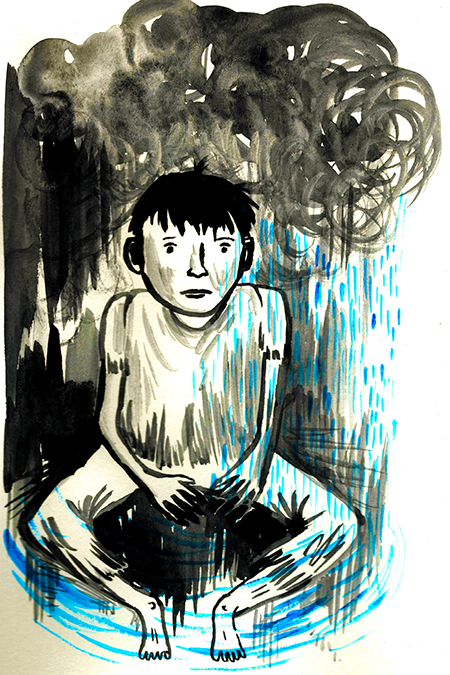Liong Sin Tian was a young Chinese boy living in Singapore during the Japanese Occupation who was taken in by Numata Shinzo, a Japanese soldier. Numata was later charged with and found guilty by a court-martial, of causing Sin Tian’s death by ill-treatment.
The story of Sin Tian was told to the court-martial primarily by Lee Chung Boo, a teacher at the trade school in Changi that Sin Tian attended, as well as Lee Siong Ghee, a Teochew painter who Sin Tian visited occasionally, and the testimony of Numata himself.
Before the Japanese Occupation, Sin Tian lived at 11 Milestone Pasir Ris. No one could definitively say who Sin Tian’s parents were or explain their eventual fate. Siong Ghee told the court-martial that Sin Tian’s father was Hokkien and that both parents had perished in a Japanese air-raid. On the other hand,Numata claimed that Sin Tian had a Japanese father who had died in an air-raid while his mother could not be located. The Japanese name that Numata addressed Sin Tian by was Chioyomatsu.
Nonetheless what is clear is that locals had found Sin Tian orphaned and brought him to Numata, who then took Sin Tian in. He enrolled Sin Tian in a Changi trade school in June 1944, as his military superiors had forbidden him to allow Sin Tian to stay with him.
According to Chung Boon, sometime in July, Numata removed Sin Tian from the school on the allegation that the boy had stolen Numata’s clothes. Chung Boon then proceeded to Numata’s house where he witnessed two Indian workers beat Sin Tian when he would not confess of the alleged theft to Numata.
Sin Tian managed to escape to Chung Boon’s house. However Numata tracked them down and got Chung Boon to return the boy to him. Sin Tian then returned to Numata’s house, where Numata then struck him with blows described as “ju-jitsu” until the boy collapsed. Chung Boon got two school prefects to carry Sin Tian’s body to the Japanese official in the school, a man called Kashihara. However, Kashihara did not want to get involved. Sin Tian’s body was then brought back to the house and laid in front of it. Siong Ghee later saw the body and saw that Sin Tian was clearly dead. Another of the trade school instructors, Lee Choon Hiang witnessed Sin Tian’s burial by three unidentified Indian workers near the trade school.
Numata disputed the story and claimed that villagers had beaten the boy as punishment for him stealing from the community. However, Numata was found guilty of causing Sin Tian’s death and was sentenced to life imprisonment by the court-martial. This sentence was later commuted to 5 years’ imprisonment. Sin Tian’s case received no recorded media attention and his unmarked grave was never exhumed. Sin Tian was only 12 years old at the time of his death.
